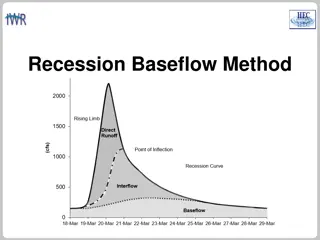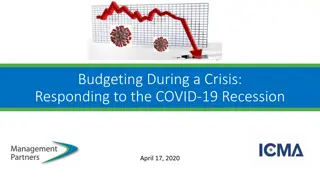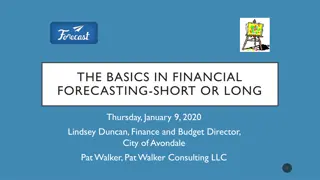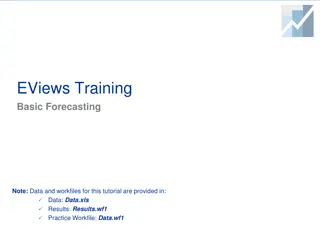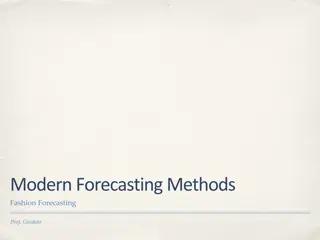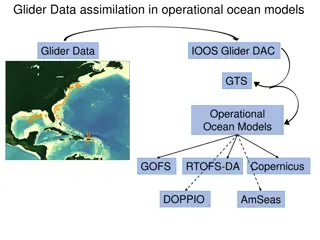Economic Forecasting Challenges Amid the Recession
Executive Director Janet Harrah of Haile/US Bank College of Business discusses the factors influencing the depth and length of the recession, the impact on the Cincinnati MSA job market, and the importance of CARES Act funding in stabilizing various sectors of the economy amidst unprecedented economic conditions.
Download Presentation

Please find below an Image/Link to download the presentation.
The content on the website is provided AS IS for your information and personal use only. It may not be sold, licensed, or shared on other websites without obtaining consent from the author. Download presentation by click this link. If you encounter any issues during the download, it is possible that the publisher has removed the file from their server.
E N D
Presentation Transcript
Janet Harrah Executive Director of Outreach Haile/US Bank College of Business Northern Kentucky University
We are in a recession: Depression next? Factors Determining Depth and Length of Recession: How long the U.S. stay-at-home orders remain in effect? How does the virus play out across the globe? How quickly is the CARES package implemented? How effective is the Federal Reserve in stabilizing the financial system? How many businesses close? How many people are laid off, and for how long?
Forecasting Challenges: Unprecedented economic conditions: uncharted territory Data lacking: national and state data only Local data for March will not be available before May, 2020 Local estimates: Cincinnati MSA has a similar industry distribution to U.S.
Review: Cincinnati MSA Estimates If the Cincinnati MSA rate is similar to U.S, OH, and KY that translates into ~77,000 to 80,000 lost jobs in the last two weeks The average job in Cincinnati Metro area pays $26/hour This translates to a weekly payroll loss of $80.1 million to $83.2 million
CARES Act Federal funding for: Health system Education system Individuals Small businesses Large businesses State and local government Employers, employees, government all needed for a functioning economy!
Number of Firms by Employer Size: Cincinnati MSA 40,000 34,686 35,000 SBA Definition 30,000 Small firms (less than 500): 96% Large firms (more than 500): 4% 25,000 20,000 17,548 15,000 10,000 5,764 4,041 4,019 5,000 2,003 1,311 0 Total 0-4 5-9 10-19 20-99 100-499 500+ Data source: U.S. Census Bureau, SUSB
Number of Jobs by Firm Size: Cincinnati MSA 1,000,000 900,000 800,000 700,000 SBA Definition 600,000 500,000 Small firms (less than 500): 44% Large firms (more than 500): 56% 400,000 300,000 200,000 100,000 0 Total 0-4 5-9 10-19 20-99 100-499 500+ Data source: U.S. Census Bureau, SUSB
Forecasting Assumptions: U.S. Real GDP growth, annualized % change Q1 GDP: down 2.5 to 3% Q2 GDP: down 25 to 30% 2020 GDP: down 6 to 6.5% Partial opening for select businesses: June to :July Full economic operations by Labor Day COVID-19 trajectory similar to Italy with a 2-3 week lag; cases peak: May, 2020 CARES Act emergency relief impacts built into assumptions A Global Recession every country impacted to some degree
Job Impacts Based on what we know today (April 8, 2020) Peak unemployment rate 10% to 12% in 2020 Q2 Between 112,000 and 134,400 people out of work This estimate does NOT account for reduced hours Some rebound in the second half of 2020 and then slow growth U or L shaped rebound; V shaped likely too optimistic Full employment recovery a minimum of 2 to 3 years away
Job Losses? Depends on the Industry Hardest hit sectors Entertainment Restaurants Hospitality Mixed bag sectors CVG passenger vs. cargo Manufacturing Relatively stable/perhaps some growth Healthcare (revenues vs. jobs) Grocery stores Package delivery services (Amazon, DHL, FedEx, UPS)
Distribution and E-commerce Everything between the manufacturer and the end user: Prior to COVID-19 in MSA: More than 1 in 10 jobs Accounting for roughly 25% of net new jobs past 5 years Maintaining market share nationally Industry primed for growth Amazon Prime hub Consumer s changing preferences for home delivery The Bentonville Effect
Healthcare Economic indicators: Demographics ensure demand Job growth assured Profits less certain Additional stimulus likely; especially for rural hospitals Policy changes are coming: Increased focus on public health Public demands for Medicine labeling Public demands for ensuring U.S. stockpile Public demands for U.S. manufacturing capacity
Next Round of Data This Week Thursday: Initial weekly unemployment claims Thursday: St. Louis Fed Financial Stress Index Next Week Wednesday : U.S. Retail Sales Thursday: Initial weekly unemployment claims Friday: State Employment (Feb. data)










